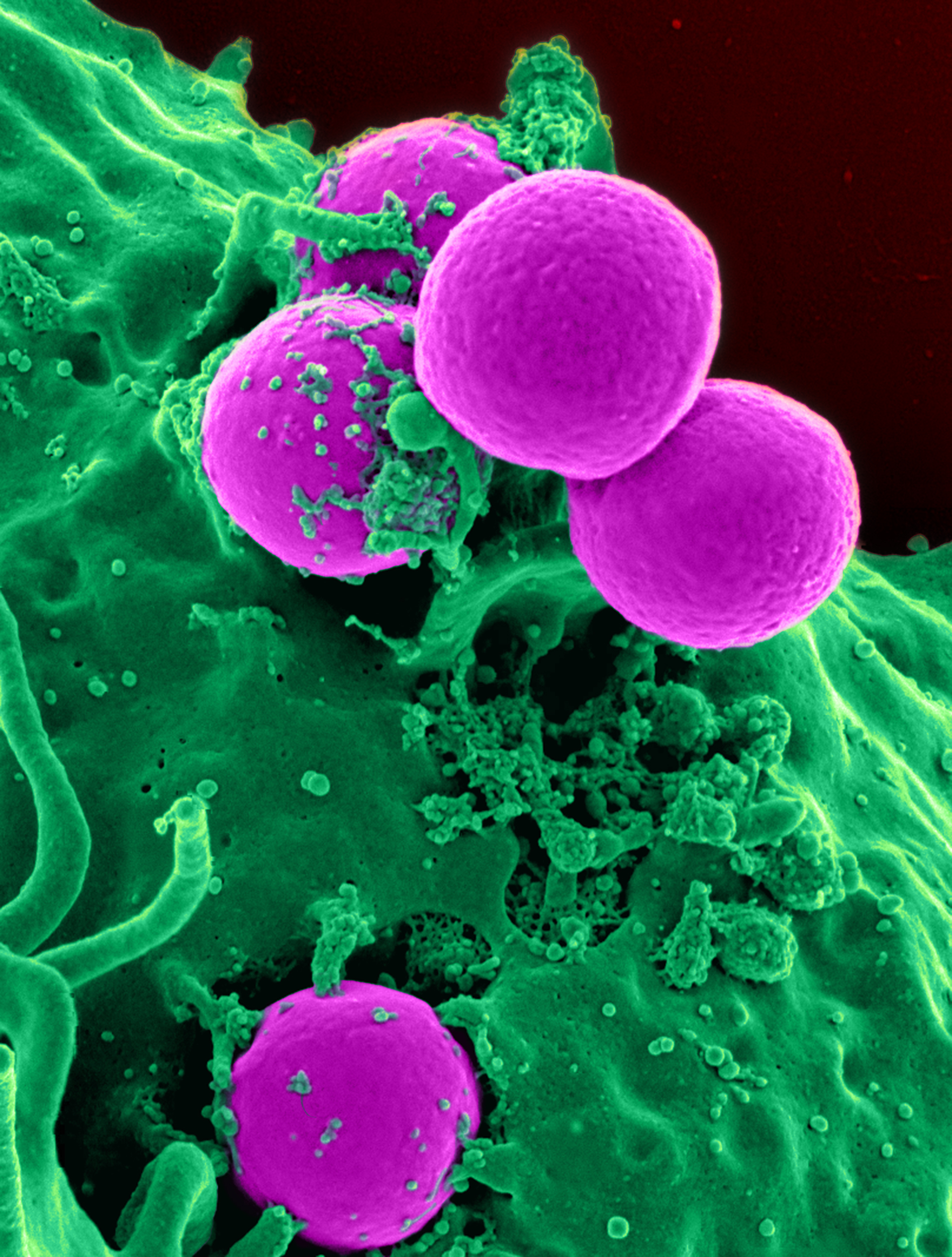Strain of MRSA evolved in hedgehogs over two centuries ago, study finds
When public health experts warn about the consequences of antibiotic resistance, the evolution of bacteria to withstand the medicines we treat them with, they typically place much of the blame for the problem on human action: our collective overuse of penicillins, tetracyclines, and other medicines over the past eight decades (1). Scientists predict that antibiotic resistance may cause upwards of 10 million annual deaths by 2050, so humans would have much to answer for (7). However, although humans have indeed rapidly accelerated the evolution of bacteria by overprescribing certain drugs, researchers in Denmark suggest that the phenomenon of resistance predates our use of antibiotics (3). The scientists, largely based in Copenhagen, point to hedgehogs, which carried resistant germs as long as two centuries ago (3).
As typically told, the antibiotic resistance chronicle begins much later: with the 1928 discovery of penicillin by haphazard scientist Alexander Fleming. Returning from a holiday after having failed to clean up samples of Staphylococcus bacteria, Fleming noted that a mold, Penicillium notatum, had entered his petri dishes from the outside environment. The presence of penicillin repelled the bacteria sample, leaving a large space around the compound and causing the scientific community to dub it an “antibiotic.” Fleming’s discovery set off a chain reaction of research that ultimately led to the mass marketing of penicillin and similar drugs during and after the Second World War (5). Over time, physicians and farm owners began to prescribe antibiotics in excess in both humans and animals, the latter to avoid paying the cost of leaving animals in sanitary conditions. This overuse sent masses of antibiotics into the stomachs of livestock and their waste, providing billions of opportunities for bacteria that could survive an antibacterial onslaught to reproduce and dominate. MRSA, or methicillin-resistant Staphylococcus aureus, one such bacteria, was discovered twenty years after penicillin’s distribution in 1960 (4). Its variations currently account for over 170,000 infections per year in Europe alone, and American adults who carry it are twice as likely to die within the next decade as those who do not (2). Unlike traditional infections, MRSA cannot be treated with most of the tools doctors have on hand, due to its resistance. Bacteria with the same property may cause an additional 10 million deaths annually by 2050 (6).

Relayed thus, antibiotic resistance appears both extraordinarily dire and uniquely manmade. However, the researchers argue, the antibiotics dilemma has simply sped up a process that appears to happen in nature anyway (1). Taking over 800 skin samples from more than 250 hedgehogs in 11 countries, they found mecC-MRSA, a MRSA variant that infects up to 30 Danes per year, on over half of the specimens (4). By analyzing the genomes of the bacteria and performing statistical analysis related to the geographical dispersal of hedgehogs, the scientists traced the evolutionary timeline of mecC-MRSA back to the 1800s (2).
The answer to why antibiotic resistant bacteria would populate hundreds of hedgehogs untreated with pharmaceuticals lies in the perpetual competitions playing on their skin. Trichophyton erinacei, a fungus that seeks to leech keratin from its hosts, lurks on hedgehogs, releasing two beta-lactam antibiotics (4). Staphylococcus bacteria that lack resistance to the beta-lactam rings (molecule structures composed of nitrogen, sulfur, oxygen, and hydrogen) die; resistant bacteria survive and reproduce, eventually evolving a predisposition for the mecC gene (4).

While mecC-MRSA remains relatively rare in humans – medical professionals only discovered the variant in 2011 in an isolate from bulk milk – the study, published in Nature this January, upends the belief that most antibiotic resistance evolved in livestock (6). On the contrary, the researchers believe that in places like Denmark and the UK, where the percentage of hedgehogs with MRSA is highest, mecC-MRSA may have evolved and zoonotically crossed from the spiny creatures to cattle (4). That would lead the high rate of mecC-MRSA on Danish hedgehogs to correspond with the significant presence of the strain of MRSA in the Scandinavian country (3).
As of now, the mecC-MRSA strain in hedgehogs is rare enough in our species that the creatures do not appear to pose an elevated risk to humans – though Jesper Larsens, one of the co-authors of the study, did warn humans to “avoid kissing” the creatures (2). Rather, the study demonstrates that antibiotic resistance is fundamentally natural, an extremely dangerous process sped up by human activity.
Bibliography:
- Dall, C. (2022, Jan 10). MRSA strain may have originated in hedgehogs – long before antibiotics. Center for Infectious Disease Research and Policy. Retrieved from https://www.cidrap.umn.edu/news-perspective/2022/01/mrsa-strain-may-have-originated-hedgehogs-long-antibiotics.
- Henderson, E. (2021, Mar 27). Adults carrying MRSA bacteria are twice as likely to die within the next decade. News: Medical Life Sciences. Retrieved from https://www.news-medical.net/news/20210327/Adults-carrying-MRSA-bacteria-are-twice-as-likely-to-die-within-the-next-decade.aspx.
- Jacobs, A. (2022, Jan 5). Hedgehogs Are a Source of Drug-Resistant Bacteria, Study Finds. New York Times. Retrieved from https://www.nytimes.com/2022/01/05/science/hedgehog-mrsa-drug-resistant-bacteria.html.
- Larsen, J, et al. (2022, Jan 5). Emergence of methicillin resistance predates the clinical use of antibiotics. Nature. Retrieved from https://www.news-medical.net/news/20210327/Adults-carrying-MRSA-bacteria-are-twice-as-likely-to-die-within-the-next-decade.aspx.
- Markel, H. (2013, Sept 27). The real story behind penicillin. PBS News Hour. Retrieved from https://www.pbs.org/newshour/health/the-real-story-behind-the-worlds-first-antibiotic.
- N.A. (2020, Dec 1). MRSA Infection. Mayo Clinic. Retrieved from https://www.mayoclinic.org/diseases-conditions/mrsa/symptoms-causes/syc-20375336.
- Shukla, D. (2019, Jan 22). Antimicrobial resistance is not ‘an abstract threat lurking in the shadows.’ Medical News Today. Retrieved from https://www.medicalnewstoday.com/articles/antimicrobial-resistance-is-not-an-abstract-threat-lurking-in-the-shadows#:~:text=One%20study%20predicts%20that%20antimicrobial,from%20204%20countries%20and%20territories.







Comments are closed.